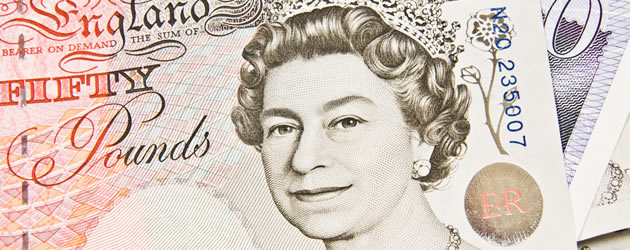- Referendum worries forecast to keep Pound demand weak – Volatility to surge if polls point to ‘Leave’ campaign lead
- Euro failed to benefit from release of latest Greek bailout funds – Single currency weakened by Brexit uncertainty
- Dovish Fed commentary failed to diminish US Dollar – Safe-haven demand suppoprted ‘Greenback’
- Yellen speech forecast to support GBP/USD exchange rate – Lower odds of imminent rate hike to dent demand for the US Dollar
GBP/EUR, GBP/USD Exchange Rates Surge Unexpectedly
The GBP/EUR, GBP/USD exchange rates jumped by over 1% on Monday as the latest polls showed increased support for the ‘Remain’ campaign.
The Pound achieved a high of 1.2937 against the Euro and 1.4673 against the US Dollar.
(Previously updated 18/06/2016)
With the EU referendum just days away the Pound (GBP) is expected to remain on weaker form against its safe-haven rivals.
Brexit Worries Predicted to Maintain Pressure on Pound (GBP) Exchange Rate
Referendum uncertainty eased somewhat ahead of the weekend, largely due to the temporary suspension of campaigning activity in the wake of the death of Jo Cox, Labour MP for Batley and Spen. With little in the way of domestic data or other activity to drive sentiment the Pound (GBP) saw some volatile movement against rivals, struggling to maintain any gains in the absence of particular support.
UK ecostats are expected to be of little impact for the Pound in the coming week, with the attention of markets primarily focused on the results of Thursday’s vote. The final round of opinion polls are likely to provoke substantial Sterling volatility, particularly if the ‘Leave’ campaign is indicated to have remained in the lead. Should support for the ‘Remain’ camp be found to have rallied in the last week, however, the Pound could trend higher on the back of diminished Brexit odds.
Single Currency (EUR) Declined despite Greek Bailout News
Confidence in the Euro (EUR) was shored up on Friday by the news that the next tranche of Greek bailout funds had been approved by Eurozone finance ministers. This eased worries that the Hellenic nation could be heading for further trouble in the coming months, now possessing the ability to make debt repayments to the European Central Bank (ECB). Although this came alongside a stronger-than-expected Eurozone Current Account surplus, however, the appeal of the single currency remained limited thanks to its associated Brexit risk.
Demand for the common currency could decline in the coming weeks if markets assess that the ECB is more likely to ease monetary policy further. Despite an improvement in the Eurozone Consumer Price Index Danske Bank Chief Analyst Arne Lohmann Rasmussen was unconvinced that the currency union is experiencing particular robustness, noting that:
‘This is mainly driven by a temporary support from the oil prices and the ECB should not yet conclude that inflation is on a sustainable path towards 2%. We still believe that the ECB is too optimistic in its outlook for core inflation.’
US Dollar (USD) Forecast to Soften on Fed Dovishness
Safe-haven demand continued to support the US Dollar (USD), despite the increasingly dovish tone displayed by members of the Federal Open Market Committee (FOMC) this week. Of particular note was the pessimistic assessment of St Louis Federal Reserve President James Bullard, who indicated a belief that interest rates should not be raised again until 2018. However, in spite of this and poor US housing data investors continued to flock to the ‘Greenback’ as risk appetite remained weak.
There could be greater bearishness in store for the US Dollar on Tuesday, though, as Fed Chair Janet Yellen will be speaking in front of the Senate Banking Panel. If Yellen also indicates that her confidence in the possibility of a summer rate hike has diminished then the ‘Greenback’ could return to a downtrend against rivals. Nevertheless, heightened levels of Brexit volatility could prompt markets to continue favouring the US Dollar.



